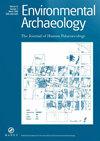Food and Farming Systems in the Neolithic – an Impossible Vista?
IF 1.1
3区 地球科学
0 ARCHAEOLOGY
引用次数: 0
Abstract
The management and utilisation of mostly novel plant and animal species for food and other products has long been recognised as a central component of the Neolithic. The period has frequently been characterised as marking a tipping point in food procurement activities, a shift that has had a fundamental impact on societies today. While there may be little difference between the modes and means of subsistence strategies (e.g. Ingold 1988) – from hunting to management of domesticated species, and from collection of wild plants to planting and cropping of domesticate cultivars – what is significantly different is that for the first time over large regions of Europe the major building blocks of Neolithic diet were the same, i.e. cereal and pulse cultivars and domesticate animal species. Across this vast geographic span, we might expect that such building blocks were re-configured and adapted at local or regional scales (e.g. Manning et al. 2013). There is also growing evidence for differences in organisational scale, e.g. between intensive small-scale garden plots and extensive systems of transhumance (Bogaard et al. 2016; Montes et al. 2020); differences in resource utilisation, e.g. mountain pastures and forests (Schibler 2017; Knockaert et al. 2017; Hejcmanová, Stejskalová, and Hejcman 2013); differences in how plant and animal systems integrated with one another (Fraser et al. 2013; Styring et al. 2017; Gillis et al. 2017), as well as differences in food processing techniques. This variation appears as much related to the pre-existing needs and cultural identity of populations as to the environmental context and niche construction (e.g. Kreuz and Marinova 2017; Gillis et al. 2019). At the same time, the qualities – and indeed agency – of these new food sources and procurement practices undoubtedly structured the lives of communities in turn, creating new seasons of activity and gradually shaping social identities and traditional practices. Within this, events such as the slaughter of animals or the gathering of harvests became important mechanisms to celebrate community and reaffirm bonds between different groups (Marciniak 2005; Wright et al. 2014; Madgwick et al. 2019). As domesticated animals and plants gained an economic hold within societies, we can imagine that their symbolic value and importance for the well-being of communities also grew (Bogucki 1988). For example, the multiple iconographic representations of cattle are probably a reflection of their greater productivity (milk, meat, and traction) in comparison to other domesticates (Marciniak 2005; Le Quellec 2011). Cattle are also relatively slow-growing, requiring investment in terms of fodder, adequate access to water and housing in order to reach adulthood and maximise this productivity (Bogucki 1993; Russell 1998; Gillis et al. 2017). The number of societies, past and present, for whom cattle are central to wealth and status reminds us that any discussions of productivity must also consider the generation of surplus, and the control of this surplus, as well the relationship to wealth accumulation and inequality (Bogaard 2017; Flannery and Marcus 2012).新石器时代的粮食和农业系统——不可能的景象?
长期以来,人们一直认为,管理和利用大多数新型动植物物种作为食物和其他产品是新石器时代的核心组成部分。这一时期经常被描述为食品采购活动的转折点,这一转变对当今社会产生了根本性影响。虽然生存策略的模式和手段(例如Ingold 1988)——从狩猎到驯化物种的管理——之间可能没有什么区别,从野生植物的采集到驯化品种的种植和种植,显著不同的是,新石器时代饮食的主要组成部分首次在欧洲大地区相同,即谷物和豆类品种以及驯化动物物种。在这片广阔的地理范围内,我们可能预计这些构建块会在地方或区域范围内进行重新配置和调整(例如Manning等人,2013)。也有越来越多的证据表明组织规模存在差异,例如密集的小规模花园地块和广泛的跨人类系统之间的差异(Bogaard等人,2016;蒙特斯等人2020);资源利用的差异,例如山地牧场和森林(Schibler 2017;Knockaert等人2017;Hejcmanová、Stejskalová和Hejcman,2013年);植物和动物系统如何相互整合的差异(Fraser等人,2013;Styring等人2017;Gillis等人2017),以及食品加工技术的差异。这种变化似乎与人口的预先存在的需求和文化认同以及环境背景和生态位构建密切相关(例如,Kreuz和Marinova 2017;Gillis等人2019)。与此同时,这些新的食物来源和采购做法的品质——实际上是代理——无疑反过来又构成了社区的生活,创造了新的活动季节,并逐渐形成了社会身份和传统做法。在这一过程中,屠宰动物或采集收成等活动成为庆祝社区和重申不同群体之间联系的重要机制(Marciniak 2005;Wright等人2014;Madgwick等人2019)。随着驯养的动植物在社会中获得经济地位,我们可以想象,它们的象征价值和对社区福祉的重要性也在增长(Bogucki 1988)。例如,与其他家畜相比,牛的多重图像表现可能反映了它们更高的生产力(牛奶、肉和牵引力)(Marciniak,2005年;Le Quellec,2011年)。牛的生长也相对缓慢,需要在饲料、充足的水和住房方面进行投资,以达到成年并最大限度地提高生产力(Bogucki 1993;Russell 1998;Gillis等人2017)。过去和现在,牛是财富和地位的核心的社会数量提醒我们,任何关于生产力的讨论都必须考虑盈余的产生、盈余的控制,以及与财富积累和不平等的关系(Bogaard 2017;弗兰纳里和马库斯,2012年)。
本文章由计算机程序翻译,如有差异,请以英文原文为准。
求助全文
约1分钟内获得全文
求助全文
来源期刊

Environmental Archaeology
GEOSCIENCES, MULTIDISCIPLINARY-
CiteScore
4.80
自引率
0.00%
发文量
32
期刊介绍:
Environmental Archaeology: The Journal of Human Palaeoecology aims to publish contributions on all aspects of environmental archaeology, from methodology to synthesis and theory.
Environmental Archaeology is an international peer-reviewed periodical which welcomes contributions that consider the interaction between humans and their environment in the archaeological and historical past. This broad scope embraces papers covering a range of environmental specialisms within archaeology, such as archaeobotany, archaeozoology (both vertebrate and invertebrate), palynology, geoarchaeology, biological anthropology, as well as more synthetic and theoretical approaches to the past human environment. Assemblage and site reports are not encouraged unless these can demonstrate significant new insights in environmental archaeology. Contributions may take the form of substantial research papers or shorter reports and may include, for instance, new techniques, philosophical discussions, current controversies and suggestions for new research. The journal also provides its readership with critical appraisal of recent academic scholarship through its regular books review section.
 求助内容:
求助内容: 应助结果提醒方式:
应助结果提醒方式:


